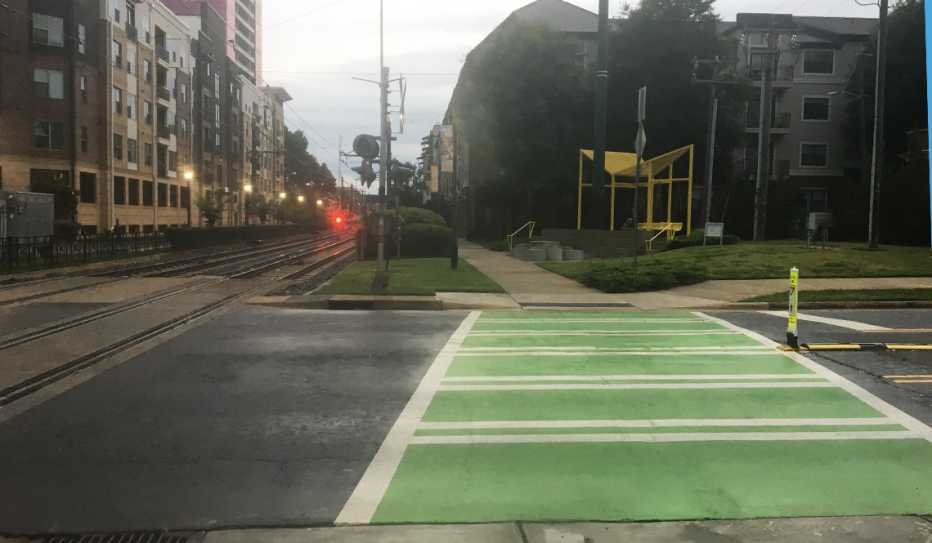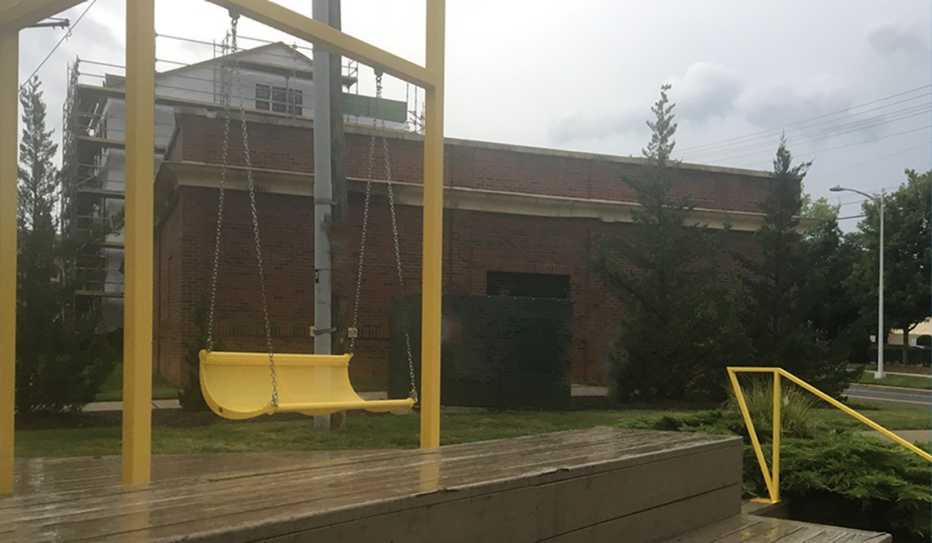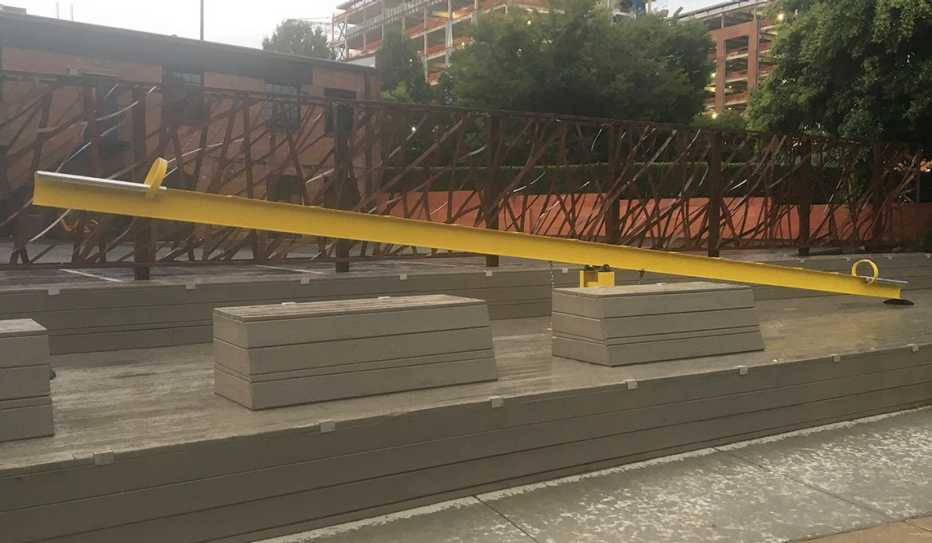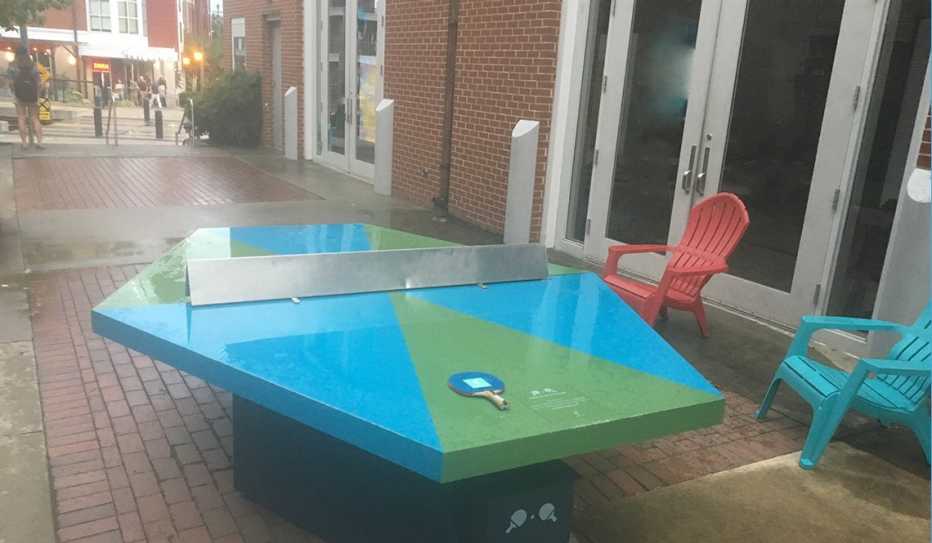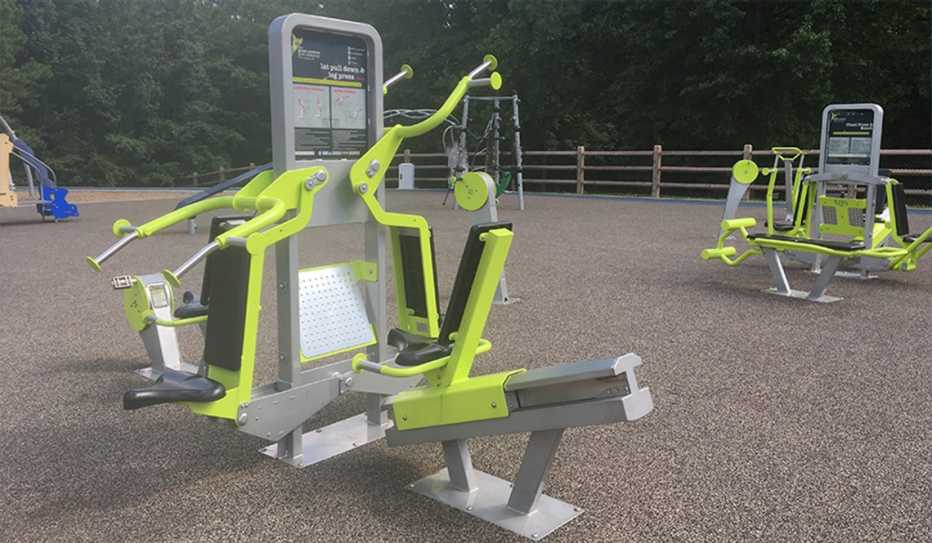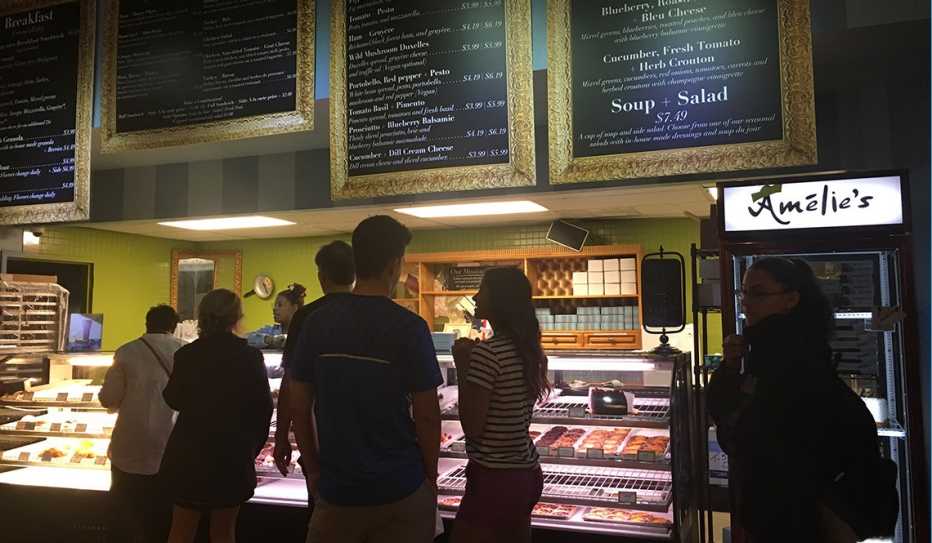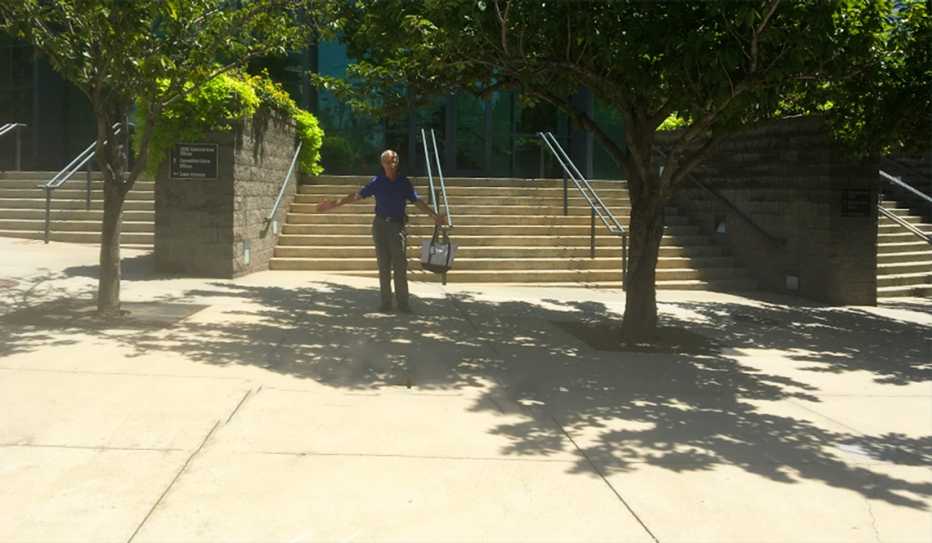AARP Hearing Center
Among the benefits of attending a livability conference is that going out on the town — to see examples of livable communities efforts in action — is useful and fun field work. The slideshow below features some of the sights conference attendees were able to see on their own or during a mobile workshop at the 2018 AARP Livable Communities National Conference.
Charlotte: The Center of the Known World!


This whimsical signpost points the way to other Charlottes — in Maine, Michigan, Tennessee, Australia, among other distant lands — and is a piece of street art located in The Green, a three-tiered, 1.5-acre private park that's open to the public. What the sign doesn't explain about "the center of the known world" but is useful to know is that Charlotte's business downtown is referred to as its "Uptown."
Splash With the Fishes


The Green, which is located at 400 South Tyron Street, contains landscaped garden beds, literary-themed sculptures and this refreshing fish fountain. Shops and restaurants line the park, making it a popular destination for residents, tourists, workers from the nearby skyscrapers, and conventioneers gathered at the Charlotte Convention Center across the street.
A Musical Space


Named after a Charlotte-born artist, the 5.4-acre Romare Bearden Park hosts weekly concerts, a summer music series, fitness classes and cultural arts programming. The park's design — which includes the shaded cafe-style seating area shown here — is based on the late artist's paintings and collages.
A Parking Lot Becomes a Park


Charlotte is organized into four wards. The 4-acre First Ward Park opened in 2015 and was created through a public-private partnership. The city, Mecklenburg County and the University of North Carolina Charlotte Center City, pictured, were the public part of the effort. The popular park has a decorative fountain with colorful lights, a plaza with water jets for splashing in, animal-themed sculptures, fitness equipment and play and climbing structures. The park is adjacent to the Charlotte light rail and walk-bike trail (see the next two slides) as well as ImaginOn, a unique library and cultural arts center for children and teens.
A Place for Pedestrians


The paved, 3.5-mile Charlotte Rail Trail runs parallel to the city's light rail tracks and is a dedicated space for bicyclists and pedestrians. Since the trail winds through neighborhoods, the well-used path is a way to walk to dinner, take a casual stoll with a stop for iced tea, go shopping or just sit on a bench to people- and dog-watch. For some lucky residents, the trail is a scenic commute to work.
CATS links LYNX


Transit-oriented developments place housing close (sometimes incredibly close) to trains, streetcars or similar means of getting around without an automobile. CATS (the Charlotte Area Transit System) runs the city's LYNX light rail, also referred to as the Blue Line, which covers 19 miles from I-485 in south Charlotte up to the University of North Carolina-Charlotte in north Charlotte. The line has 26 stations and traveling from one end to the other takes about 45 minutes. The system typically operates from 5 a.m. to 1:30 a.m. with trains arriving every 10 minutes. The roundtrip fare costs $4.40 for adults and $2.20 for senior citizens, students or people with disabilities. Tickets are sold from a vending machines on the station platforms, and while there are no turnstiles or ticket-takers, there are fare inspectors. Being caught without a ticket can result in a hefty fine.




























































